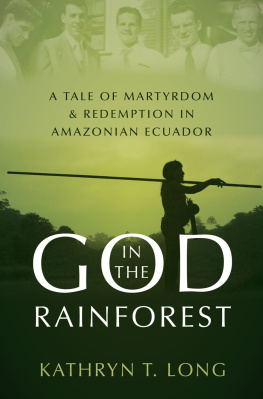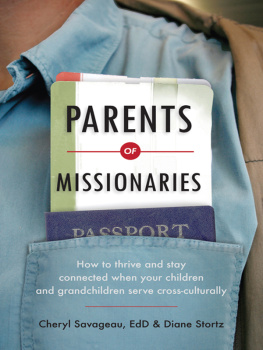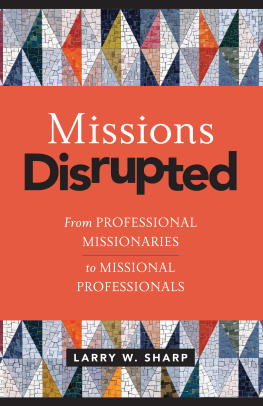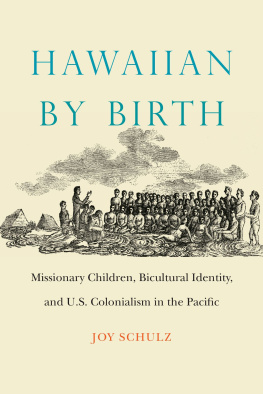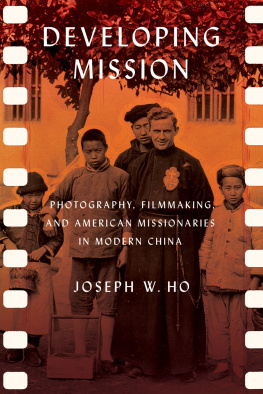GOD IN THE RAINFOREST

Oxford University Press is a department of the University of Oxford. It furthers the Universitys objective of excellence in research, scholarship, and education by publishing worldwide. Oxford is a registered trade mark of Oxford University Press in the UK and certain other countries.
Published in the United States of America by Oxford University Press
198 Madison Avenue, New York, NY 10016, United States of America.
Oxford University Press 2019
All rights reserved. No part of this publication may be reproduced, stored in a retrieval system, or transmitted, in any form or by any means, without the prior permission in writing of Oxford University Press, or as expressly permitted by law, by license, or under terms agreed with the appropriate reproduction rights organization. Inquiries concerning reproduction outside the scope of the above should be sent to the Rights Department, Oxford University Press, at the address above.
You must not circulate this work in any other form and you must impose this same condition on any acquirer.
CIP data is on file at the Library of Congress
ISBN 9780190608989
eISBN 9780190609009
To my brother and sister,
Keith Long and Jan Long Davis
Contempt imposes; grace discovers.
Contempt generalizes; grace is charmed by haunting particularities.
Contempt entraps; grace frees.
Marilynne Robinson
Key West Literary Seminar
Contents
In the case of the Waorani, missionary sourcesespecially, although not exclusively, from the Summer Institute of Linguisticswere indispensable, since missionaries were the first outsiders to make sustained contact with this Amazonian group. Missionaries were also among the few outsiders who achieved some fluency in Wao tededo, a language unlike any other and initially with no written form. Important missionary sources in Spanish included the published observations of Bishop Alejandro Labaca and the detailed history of the Waorani by the Capuchn missionary Miguel Angel Cabodevilla. Unless otherwise indicated, all translations from Spanish are mine.
In 1974 James A. Yost became the first anthropologist to study the Waorani, followed by Clayton and Carole Robarcheck in 1987 and Laura Rival in 1989. Their work, especially Yosts research, has been essential to my understanding of the Waorani. An increasing number of anthropologists have done fieldwork among the Waorani in more recent years. Publications by James S. Boster, Stephen Beckerman, and Flora Lu Holt have been especially helpful.
Rachel Saint (191494) and Elisabeth Elliot (19262015), pioneer missionaries among the Waorani, recorded their impressions from the day they arrived at the Wao clearing that came to be named Tewno. Elliots letters, articles, and other papers housed in the Billy Graham Center Archives at Wheaton College, as well as her book, The Savage My Kinsman (1961), describe Wao life on the cusp of the dramatic changes that accompanied outside contact. Rachel Saints understanding of the Waorani was influenced by her relationship with the Wao woman Dayom, as reflected in their collaboration with the writer Ethel Emily Wallis on The Dayuma Story: Life under Auca Spears (1960), a book that contained early charts tracing relationships within Dayoms kinship group. Saint also included information about the Waorani in reports and letters to administrators with the Summer Institute of Linguistics, her sending agency. Many of these materials are in the Ecuador Branch Collection, part of SIL Internationals Americas Area Archives in Dallas, Texas. Others are in the William Cameron Townsend Archives, Waxhaw, North Carolina. Saint treasured her relationship with Uncle Cam and his wife, Elaine, and the Townsend Archives contain much of their correspondence related to the Waorani.
I was fortunate to have access to the personal papers of the late Catherine Peeke, an SIL linguist. Peeke analyzed the grammatical structure of Wao tededo for her PhD dissertation, completed in 1968. Much of her adult life was spent in Ecuador, including twenty-five years assigned by SIL to work with the Waorani. By her retirement in 1992 at age sixty-eight, Peeke understood and spoke the Wao language better than any other outsider. While in Ecuador, she maintained an extensive correspondence with family, friends, and SIL colleagues, which included observations of the Waorani.
Yost, mentioned earlier, was an SIL staff member with a PhD in anthropology. He kept daily field notes, usually a few lines jotted into a small spiral notebook, from his arrival in Tewno in 1974 until the day he and his family were flown out of the rainforest in 1982. On subsequent trips to Ecuador, he continued the notes. I had access to a typescript copy from the years 197479, including Yosts initial observations of Wao culture. Information from several interviews was helpful as well, as was the transcript of a 1987 interview in Ecuador with a group of Waorani by Yost and John Man. Literacy specialist Patricia Kelley provided essential explanations of Wao orthography and other issues, simplified for the nonspecialist. At my request, Yost and Kelley reviewed portions of the manuscript for factual accuracy. During two days of interviews at her home in Holzhausen, Germany, the late Rosi Jung, a linguist and medical worker, offered her perspective as the only European member of the SIL Wao team.
Of course, many of the missionary sources that documented the Waorani were sources for the history of the missionaries as well. I also had access to letters and journals on the plans of the five men to contact the Waorani and the events that led to their deaths, particularly materials by Nate Saint from the late Marj Saint Van Der Puy and Nate Saints letters in the Records of Mission Aviation Fellowship. These sources were in addition to the still valuable, published accounts, like Elisabeth Elliots Through Gates of Splendor (1957), Jungle Pilot (1959) by Russell T. Hitt, and Unfolding Destinies (1990) by Olive Fleming Liefeld. In the interest of brevity, frequently cited sources appear throughout the notes in abbreviated form. An abbreviations list just before the notes provides the abbreviation and full citation information. The list also contains abbreviations and full citation information for frequently cited archival and manuscript collections, as well as the full names of individuals often cited in those collections.
The book is broadly chronological, although because of parallel story lines, some chapters overlap chronologically and have a more topical focus than others. Due to an already lengthy manuscript, I limited my research on the five Ecuador martyrs in order to focus on those missionaries and Waorani whose stories have rarely or never been told. I also limited my focus to Ecuador and the US. Much still could be written about the impact of the story in Great Britain, Canada, Latin America outside of Ecuador, and elsewhere.
I experienced the Waorani and their rainforest home firsthand during a three-week trip to Ecuador in 2005. The trip included visits, ranging from a few hours to five days, with Waorani in six clearings in the former protectorate. Despite language and cultural barriers, the opportunity to spend time with the Waorani, including some who appear in the pages of this book, was invaluable. Any errors or misrepresentations of Wao culture in the pages that follow are, of course, my own.

